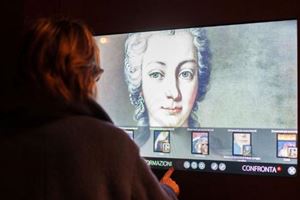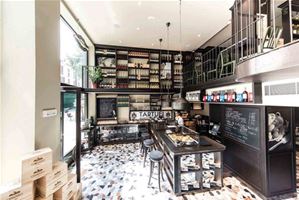Trompe l’oeil:
‘Style of representation in which a painted object is intended to deceive the
viewer into believing it is the object itself.’ (Encyclopedia Britannica)
Trompe l’oeil, also
called illusionism, is a virtuoso optical technique that artists have practiced
for centuries. Using a wide variety of media, artists’ trompe l’oeil make the
unreal appear real, to deceive the viewer’s
eye. Whether executed as play or as intellectual exploration, trompe l’oeil
raises several questions: Is the object real? Or is it unreal? If not, what is real?
Until
January 24, 2010, Palazzo Strozzi is
hosting Italy’s largest exhibition to
date on the fine-and often controversial-art of trompe l’oeil. Art and
Illusions: Trompe l’oeil Masterworks from Ancient to Contemporary explores the
mysterious links between perception and art. It also examines the impact trompe
l’oeil has had on a variety of twentieth-century arts, from furniture and industrial
design to fashion and cuisine.
Trompe l’oeil was
used in ancient Greece, it was common in the decorative murals in
ancient Rome, especially in villas in Pompeii, and it and flourished from the Renaissance
onward. By the baroque period, artists were so skilled in perspective that they
were able to depict objects and spaces with eye-fooling exactitude.
The
150 works featured at Palazzo Strozzi blur the boundaries between the ‘real’
and the ‘represented.’ A window appears to be open to the countryside. A fly
appears to be sitting on a painting’s frame. A frescoed ceiling appears to be
the inside of a dome. A creased piece of paper appears to be attached to a
board. A book appears to be open on a table. A person appears to be climbing
out a painting, escaping the scathing gaze of the critic, as Spanish artist
Pere Borrell del Caso’s title, Escaping Criticism (1874), suggests. To
explore the interaction between artists and viewer, along with paintings, the
exhibit includes examples of optical manipulations in sculpture and other
media.
Among the exhibit’s
10 sections, ancient Rome, where the theme of deception gave rise to an
artistic school, receives special attention, as do the Flemish trompe l’oeil
masters of the 1600 and 1700s, whose innovations helped revive the genre.
Palazzo Strozzi also
welcomes families to the exhibit, with card games, magic tricks and workshops
(in English and Italian) for children aged 3 to 12, and even a contest for both
children and adults, called ‘A Fugitive in Florence.’







